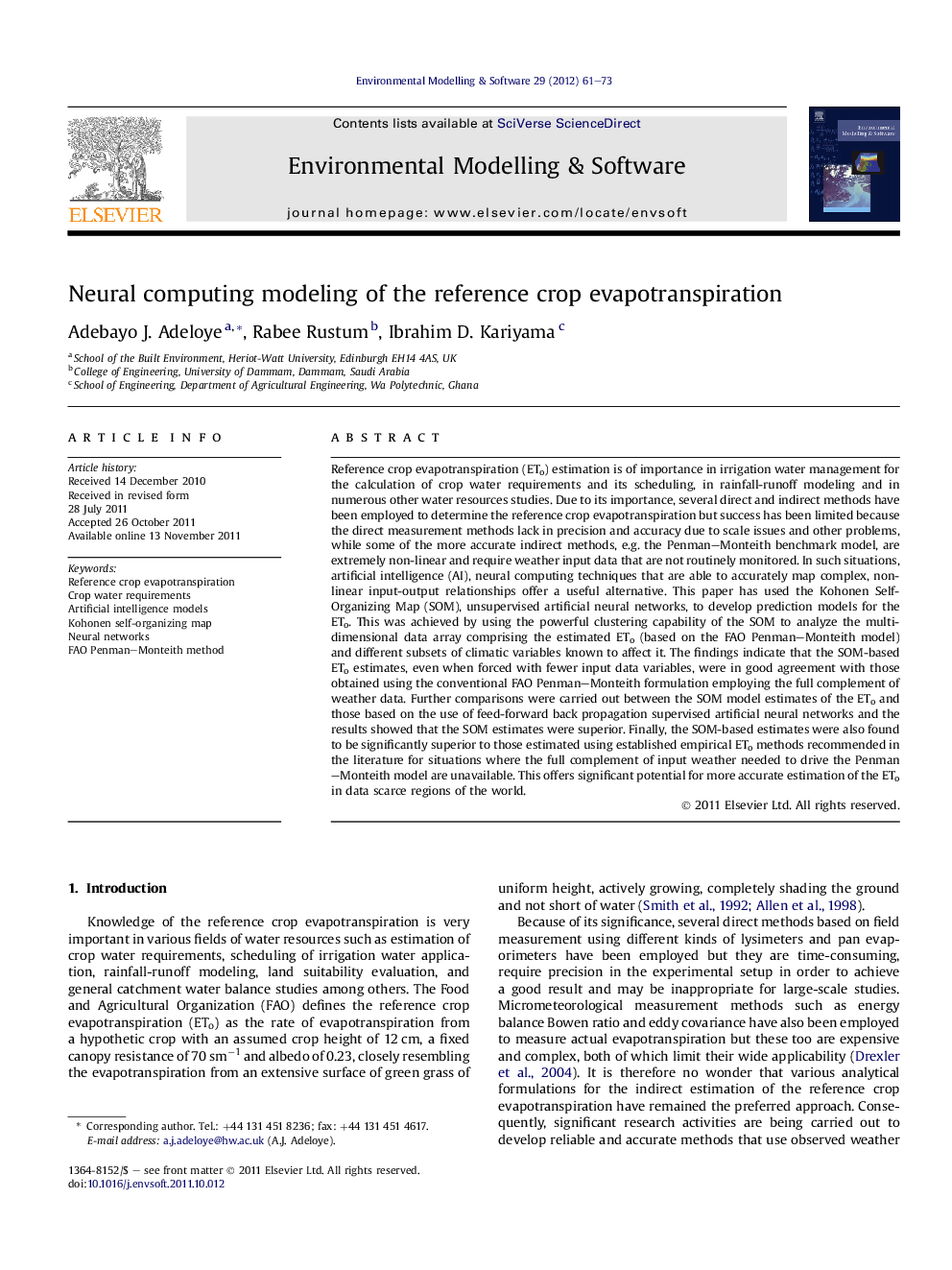| Article ID | Journal | Published Year | Pages | File Type |
|---|---|---|---|---|
| 568966 | Environmental Modelling & Software | 2012 | 13 Pages |
Reference crop evapotranspiration (ETo) estimation is of importance in irrigation water management for the calculation of crop water requirements and its scheduling, in rainfall-runoff modeling and in numerous other water resources studies. Due to its importance, several direct and indirect methods have been employed to determine the reference crop evapotranspiration but success has been limited because the direct measurement methods lack in precision and accuracy due to scale issues and other problems, while some of the more accurate indirect methods, e.g. the Penman–Monteith benchmark model, are extremely non-linear and require weather input data that are not routinely monitored. In such situations, artificial intelligence (AI), neural computing techniques that are able to accurately map complex, non-linear input-output relationships offer a useful alternative. This paper has used the Kohonen Self-Organizing Map (SOM), unsupervised artificial neural networks, to develop prediction models for the ETo. This was achieved by using the powerful clustering capability of the SOM to analyze the multi-dimensional data array comprising the estimated ETo (based on the FAO Penman–Monteith model) and different subsets of climatic variables known to affect it. The findings indicate that the SOM-based ETo estimates, even when forced with fewer input data variables, were in good agreement with those obtained using the conventional FAO Penman–Monteith formulation employing the full complement of weather data. Further comparisons were carried out between the SOM model estimates of the ETo and those based on the use of feed-forward back propagation supervised artificial neural networks and the results showed that the SOM estimates were superior. Finally, the SOM-based estimates were also found to be significantly superior to those estimated using established empirical ETo methods recommended in the literature for situations where the full complement of input weather needed to drive the Penman–Monteith model are unavailable. This offers significant potential for more accurate estimation of the ETo in data scarce regions of the world.
